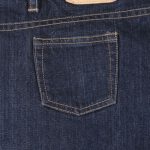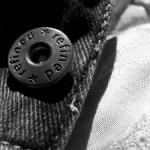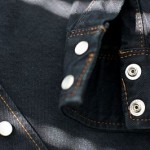Have you discovered wrinkles on your jeans? Jeans aren’t immune to wrinkles. Regardless of the cut or style, most jeans will eventually develop wrinkles if you wear them long enough. The good news is that you can remove wrinkles with an iron. Running a steam iron over your jeans will “release” the wrinkles while subsequently restoring your jeans back to their smooth appearance.
Do Check the Care Tag
While most jeans are safe to iron, you should always check the care tag beforehand. You can typically find the care tag inside the waistband. Like with other garments, it will reveal instructions on how to wash, dry and care for your jeans. As long as your jeans are made of plain denim, they should be safe to iron. If they are made of an alternative material, though, the care tag may advise you not to iron them.
Do Wash and Dry
You should wash and dry your jeans before ironing them. Ironing a pair of dirty or wet jeans is never a good idea. If your jeans are dirty, exposure to a hot steam iron could result in permanent stains. If your jeans are wet, on the other hand, you may struggle to smooth them out with an iron. Before ironing your jeans, run them through the washing machine and dryer.
Do Pull Out the Pockets
Another tip to follow when ironing your jeans is to pull the pockets out. Most jeans have four pockets: two in the front and two in the back. Ironing over these jeans may create new wrinkles. A simple solution is to pull out the pockets. Turning the pockets inside out will allow you to iron the surrounding denim rather than the pockets themselves.
Do Use the Steam Release
Most irons have a steam release function. It consists of a button that, when pressed, will spray a small amount of steam out of a nozzle and onto the underlying garment. You should take advantage of this function when ironing your jeans. The steam release function will apply a small amount of moisture to your jeans so that the wrinkles come out more easily. If you come across a particularly stubborn wrinkle, for example, press the steam release button.
Do Place on an Ironing Board
It’s recommended that you use an ironing board when ironing your jeans. Ironing boards are designed to withstand the heat of an iron. You can lay your jeans flay on an ironing board, after which you can run an iron over them.

Don’t Iron Over the Zipper or Buttons
You should avoid ironing over fasteners on your jeans. Maybe your jeans have a zipper on the fly, or perhaps they have buttons. Some jeans, of course, have a zipper and buttons. Regardless, you should use caution to ensure that you don’t accidentally go over these fasteners with the iron. While it may sound harmless, ironing over fasteners may cause permanent stains. It will heat up the metal fasteners while causing them to imprint into the denim material.
Don’t Hold the Iron in Place
A common mistake people make when ironing their jeans is leaving the iron in place for an extended period. If there’s a deep wrinkle on your jeans, for instance, you may assume that it’s best to hold the iron over that area of your jeans. But holding the iron in place may burn your jeans. Irons produce heat. After all, they rely on heat and steam to release wrinkles. The longer you hold the iron in place, the greater the risk of it burning and staining your jeans.
Don’t Start With the Highest Heat Setting
While irons typically have multiple heat settings, you shouldn’t start with the highest heat setting. Irons can reach temperatures of over 400 degrees Fahrenheit on the highest heat settings. Even if your jeans are severely wrinkled, you don’t need that much heat to smooth them out. A lower heat setting will suffice. When ironing your jeans, start with the lowest heat setting. If it’s not enough, you can gradually raise the temperature of your iron as needed.
Don’t Use a Dirty Iron
Irons can get dirty. Before ironing your jeans, check your iron to ensure that it’s clean. Fibers and lint can melt to the surface of your iron. As these melted fibers and lint accumulate, they can have a negative impact on the performance of your iron. Your iron may fail to remove wrinkles, or it may transfer some of these melted fibers and lint onto your jeans.
To prevent problems such as these from occurring, you should clean your iron on a regular basis. With your iron disconnected — as well as cool to the touch — clean the surface of your iron. You can use a sponge and some dish soap. It should only take a few minutes to clean your iron, but doing so will prolong its lifespan while protecting your jeans and other garments from damage in the process.
Don’t Iron Too Often
What’s wrong with ironing your jeans too often? The more you iron them, the greater the risk of your jeans fading. Frequent ironing is a common cause of fading. It will expose your jeans to heat. Heat, of course, promotes fading. You may not notice any change in your jeans’ color after ironing them just once or twice. Continuously ironing your jeans, though, may result in them fading. You can still iron your jeans, but you may want to iron them less frequently — especially if you’re worried about them fading.
Don’t Use Stale Water
Another mistake to avoid when ironing your jeans is using stale water. Your iron should have a water tank. Upon turning it on, your iron will heat up this tank. The problem with stale water is that it may contain mold or mildew. As you run the iron over your jeans, the stale water will transfer these mold and mildew spores onto your jeans. If you’re going to iron your jeans, use fresh water. You should empty the tank and refill it with fresh water to protect your jeans from mold and mildew.











